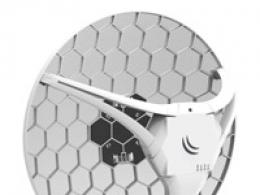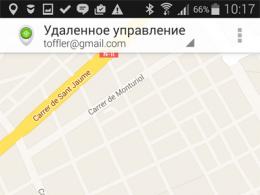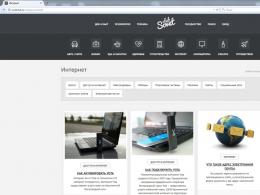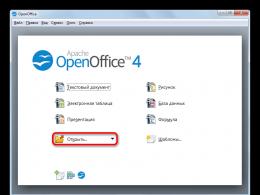Miniature flying selfie camera AirSelfie. Mini Flying Selfie Camera AirSelfie Built-in Sensors in Lily Camera
There are a huge number of fans in the world to take selfies, i.e. photographs of themselves beloved. In a museum or in a beautiful restaurant, on the beach or in the city center, you can see people taking selfies everywhere. Selfie drones are designed to make this process more convenient and of high quality. We present to your attention a review of the smallest selfie drone Air Selfie.
Description
“Say goodbye to your selfie stick that hurts your hand” is the slogan of the new super-compact selfie drone. AirSelfie is the first handheld flying camera that is no larger than a standard smartphone.
The release of this drone was preceded by two years of work of engineers.
Initially, she planned to raise 45,000 EUR for the project. At the time of this writing, 575,000 EUR have been collected
The device measures 6.7 x 6.4 x 1cm and fits easily in your pocket. Weighing only 52 grams, Air Selfie has an all-aluminum body, equipped with 4 brushless motors and a set of sensors, including: gyroscope, magnetometer, . Those. In fact, it is a full-fledged quadcopter.

Battery
Power is provided by a built-in battery 240mAh 7.4V which is enough for about 3-4 minutes of flight. The developers have provided a special case for AirSelfie, which is attached to your mobile phone. The case serves not only for protection, but also as a charger that allows you to carry out 20 cycles of charging the quadcopter. Charging takes approximately 30 minutes. Alternatively, the drone can be charged using a regular microUSB cable.

Flight characteristics
The drone is controlled via wi-fi (2.4 GHz) using a mobile phone. This requires downloading the AirSelfie App.
The drone can fly to a maximum height of 20 meters
The drone can fly in three modes, which are selected in the application:
- selfie mode: With this mode, you can zoom in and out of your AirSelfie with just two buttons.
- Selfie Motion Control mode: AirSelfie real-time control with a virtual joystick
- flying mode: pilot mode in which the phone replaces the classic controller.

Camera
The device is equipped with a 5 megapixel camera capable of capturing photos and videos in HD quality and recording to a built-in 4 GB micro-SD memory card. Once you've finished shooting, your photos will be immediately uploaded to your mobile device via Wi-Fi and ready to be shared on social media.

Price and release dates
The developer promises the first deliveries in April 2017. Delivery is possible in several configurations which:
Comes with regular case
- AirSelfie Drone;
- Case for drone;
- micro USB cable.
Complete with charging case
- AirSelfie Drone;
- Case with charging;
- micro USB cable.
Prices start from 179 EUR.
Preliminary conclusions
The device certainly interested, but two things confuse me: the short flight time of the copter is only 3 minutes, the camera parameters are not entirely clear. Let's wait for the official release.
*Attention! The project assets were purchased by two different brands. As a result, the drone received two different developments: /.
*According to the latest data (as of 01/12/2017), the developer canceled the project due to lack of funds to start production!
Introduction
The very idea of developing such a drone was born in the recent 2013 in the basement of the robotics laboratory at the University of California at Berkeley. The guys Henry Bradlow and Vahram Antonyan were the first to consider the idea in which the drone would act as a fully autonomous one. Now selfie lovers will get an assistant who will do everything for them himself and from any angle. The drone was given the name Lily Camera and its main task is highly intelligent, high-quality photo and video shooting from the air in a fully automatic mode, it is not afraid of water and has a compact size.
Overview
The weight of the Lily Camera quadcopter is 1.3 kilograms, and its dimensions are really impressive (26.1 × 26.1 × 8.18cm), as well as its appearance, no sharp corners, only smooth streamlined lines. Execution materials: black polycarbonate/brushed aluminium. The main rotors of the quad are immediately striking, they have a folding mechanism for easy transportation in a bag or backpack.
The quad is protected from dust and water by IP67 protocol (full protection against dust as well as water, up to 1 meter of immersion in water) . This allows you to land the drone on the water without fear of drowning it, just like taking off the drone from the water is not a problem.
The main remote control (tracking device) of LiLy is completely different from the usual remotes for UAVs, no joysticks, FPV monitors and antennas. This is a compact bullet bracelet with a diameter of only 5.2cm (weight: 28g) with a basic set of buttons for adjusting the drone's operation. It can be worn on the arm or just put in your pocket.
It is on it that the Lily drone will always be guided during the entire flight. Whoever has the remote is in the frame! The bracelet is powered by a built-in lithium-ion battery. Charged via microUSB connector, one charger as the drone (included). Working time is about 4 hours. A microphone and a barometer are also built into the bracelet.
The remote control itself, unlike the drone, is not waterproof, but this is not a problem, since it comes with a waterproof case. As mentioned above, the main remote control for the Lily camera quadrocopter will be a bracelet remote control , but if the user wants to “get behind the wheel of a drone”, then he can always buy a classic remote control. For example, in order to shoot the best shots with the participation of a friend, but already on their own and with their own vision of action shooting. The presence of a classic remote control in the kit will greatly expand the capabilities of the drone as a whole.
flight properties
Drone Lily camera is capable of speeds up to 40 kilometers per hour, which is good news. High-quality photo-video filming can be carried out at a height of 3-15 meters from the remote control, at a distance of 3-30 meters.
Camera
The Lily camera drone has a built-in FullHD camera with a 94º field of view. The camera shoots 12MP stills and 1920×1080p video at 60fps or 1280×720p at 120fps, allowing you to use the Slow Motion feature to add beauty to your video footage. All footage is stored on a microSD memory card with a capacity of 4GB (the expansion ceiling is not yet known).
Sensors
- Accelerometer
- 3 axis gyroscope
- Magnetometer
- Barometer
Wristband sensors
- Accelerometer
- Barometer
- Microphone
- vibration motor
Battery
The quadcopter received a built-in lithium- ion battery, allowing you to be in flight for up to 20 minutes. Charging is carried out using a 10A charger (included). Time to fully charge the battery 2 hours. At the moment, this is the only information about the built-in power supply of the drone.
Extended capabilities
- Changing camera settings
- Create custom snapshots
- Editing and then sharing footage
- Lily mobile app (for IOS and Android to facilitate the use of drone functions)
Activation
In order to launch the Lily camera drone, the user will need only a few seconds. Activate the remote control bracelet, set the quad rotors to the flight position, then turn on the drone itself (the button on its back under the cover). The peephole indicator on the front of the drone will light up, throw the quad up, the drone will take off and hover in anticipation of your further movement. To land the drone, activate the “Return to home” function on the remote control or from the gadget and extend your hand, the drone will land right on the palm of your hand.
An application for managing the functions and settings of Lily Camera using the gadget will be available for IOS/Android.
Equipment
- Quadcopter Lily Camera (with built-in lithium-ion battery)
- Tracking device (wristband remote control with built-in lithium-ion battery)
- Protective case for tracking device
- Charger
- microSD card 4GB
- Instruction (in English)
Appearance
Specification
Drone
Function"Returnhome»
Function"Controldistances»
Minimum proximity to the bracelet
Maximumremotenessfrom the bracelet
Maximum lifting height
Pre-programmed flight modes
Typebatteriesdrone
built-in lithium polymer battery
Timeflight
≈ 20 minutes
Max Speed
Motors
brushless type
Dimensionsdrone
26.1×26.1×8.18cm.
Flying environment
outdoors
Camera
Video:
1920×1080p@60fps or 1280×720p@120fps
FOV Viewing Angle:
Permissioncameras:
Image stabilization:
digital fixed focus
Media type:
microSD card (4GB)
Formatvideo:
Protocol IP67 (number 6 means full protection against dust, 7 - protection against immersion in water up to 1 meter)
Output
What can I say, a great idea for the developers, they came up with . At the moment, Lily is a very relevant device and, apparently, the project has a great future. The drone is perfect for people who have connected their lives with active sports, as well as for all those who just love to live and enjoy life.
According to the latest data (12.01.2017), the manufacturer curtailed the project due to lack of funds to start production. To everyone who has already made an advance payment for the drone, the company will return the money within 60 days.
A photo


The founders of a startup called Lily position their device as a flying camera, although in appearance, many would call Lily a flying drone or just a quadcopter.

Filming yourself with a camera attached to a quadrocopter while moving is not an easy task, and often you can’t do without third-party help. It is intended to solve this problem.

The usual control, as in other quadrocopters, is not provided here. Everything is much easier. Just toss Lily in the air and she will automatically track you, follow you and take pictures. The main thing is that you have a special tracker-transmitter with you, which Lily, in fact, points to.

The Lily's maximum travel speed is electronically limited to 40 km/h. The device is not able to track obstacles (trees, poles, houses, etc.), so you will need to use the camera in open areas.
The maximum video quality is 1080p60. Photo resolution - 12 megapixels. It is curious that the microphone is fixed not on the aircraft, but in the tracker-transmitter. A very sensible solution, since apart from the hum of motors from a quadrocopter, it is unlikely that it will be possible to record anything useful.
Separately, it is worth noting dust and water protection IP67 of this device. The standard implies short-term immersion to a depth of 1 m. In general, it will be possible not to worry that Lily will fail when it enters the water. In the official video, a flying camera is thrown into the water from a kayak and after that it works without problems.
When ordering before June 15, the cost of new items will be $499 + shipping costs ($20-30), after this date - $999. Deliveries of the flying camera are expected in February 2016.
London-based startups managed to raise the necessary amount of money (€45,000) with the help of crowdfunding to create compact selfie drones. At the moment, mass production of AirSelfie is planned.
It consists of a camera and with its dimensions (6.7x6.4x1 cm) fits easily in your pocket. It is equipped with the following elements:
- A set of sensors;
- WiFi adapter;
- Rechargeable battery capable of holding a charge for 3 minutes of battery life (260 mAh);
- Built-in memory of 4 GB.
The maximum height that the drone can take off is 20 meters, and from this height it can take pictures of you and your loved ones. Camera resolution - 5 megapixels. In addition, you can record videos with it.
Before using the device, you need to install a special application on your smartphone. The operating system must be iOS or Android.
How a drone works
To take photos with the selfie camera, you need to:
- Launch AirSelfie;
- Find the desired angle using a smartphone;
- Set a countdown timer;
- Choose the right pose for the photo.
In addition, there is an external battery case that charges the drone up to 20 times.
The public liked the idea so much that the advertising campaign yielded significant results within a week of its launch. The developers promised that the drone will go on sale in March 2017. The approximate cost of a selfie camera is €180.
American team Lily Robotics stepped forward. They did not follow the path of companies producing controlled quadrocopters. The goal was to make something more technologically advanced than the rest, not like ordinary drone models.
Quadrocopter Lily Camera or "flying camera" is a new generation drone with a complete lack of settings and controls. Young graduates of the California Robotics University at Berkeley have invented an indispensable thing for fans of extreme sports, tourists and travelers.
Appearance
The quadcopter looks solid, and at the same time cute, because of its blue LED eyes. The drone is made of polycarbonate with brushed aluminum inserts. Only a drone can match the originality of its design X iro Xplorer 5 . It looks like a cast seamless disk with four legs. In fact, the quadcopter cannot be disassembled as it is completely sealed. The manufacturer claims that Quadcopter is not afraid of water and dust, and has a high level of protection against external factors (degree of protection IP-67). We have a selection of drones that .

You can buy a quadrocopter in only one color scheme.
Flight characteristics
Quadcopter Lily is essentially a flying camera that will follow you and film you for 20 minutes on a single charge with its collector motors. It is activated by throwing the quadcopter into the air or even into the water.
The reference point for the quadrocopter is a small beacon, which is put in a pocket or worn on the hand. Using 8 built-in sensors, the quadcopter evaluates the environment and selects the appropriate route. The maximum speed of the drone is 40 km/h. The manufacturer claims that the quadcopter can fly at a wind speed of 6 m/s. The flight height is limited, only 15 meters from the beacon, and it flies forward only 30 meters. When the quadcopter runs out of charge, it will land smoothly, after warning you.
But everything can not be so good, he still has significant disadvantage. It consists just in the tightness of the quadrocopter, and the impossibility of replacing the battery. The drone takes 2 hours to charge and 20 minutes to fly. Then you have to recharge again. Minus it or not, you be the judge.

Built-in sensors in Lily Camera
- accelerometer;
- Barometer;
- 3 gyroscopes;
- Magnetometer;
- Microphone;
- Vibration motor.
Camera
Lily Camera already has them two. One on the bottom, the second in front for the main shooting. For a variety of shots, the drone has 3 shooting modes: behind you, in front of you And circular mode.
The quadcopter is able to shoot in resolutions 720p 120fps And 1080 60 fps. Plus, the camera has autofocus, auto image stabilization, and the ability to take 12 megapixel stills. And for video recording, there is a built-in memory of 4 GB and a microSD slot.
Equipment
- drone;
- beacon;
- Instruction;
- Cover for beacon.
Characteristics
- Size: 261x261x818mm;
- Weight: 1300 gr;
- Flight time: 20 min;
- Charging time: 2 hours;
- The minimum height above the object is 1.75 m;
- Maximum height: 15 m;
- Minimum distance from the object: 1.75 m;
- Maximum distance from the object: 30 m.
Camera resolution
- Photo: 12 mp, 4000x3000 px;
- Video: 1080-60 fps, 720-120 fps;
- Built-in memory: 4 GB;
- Connector for external SD card;
- Shooting angle: 94º.






